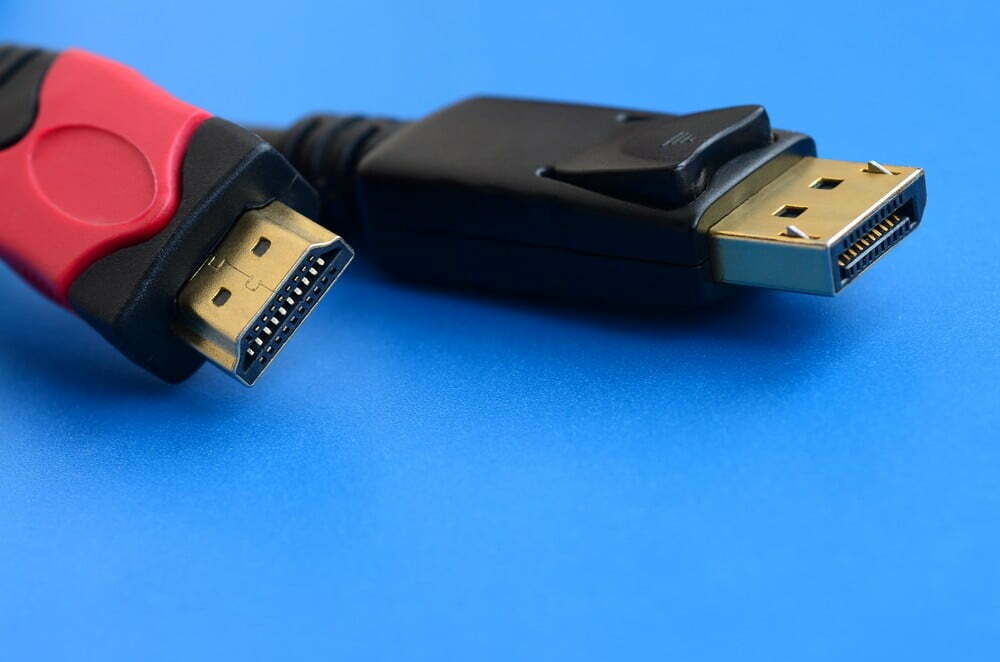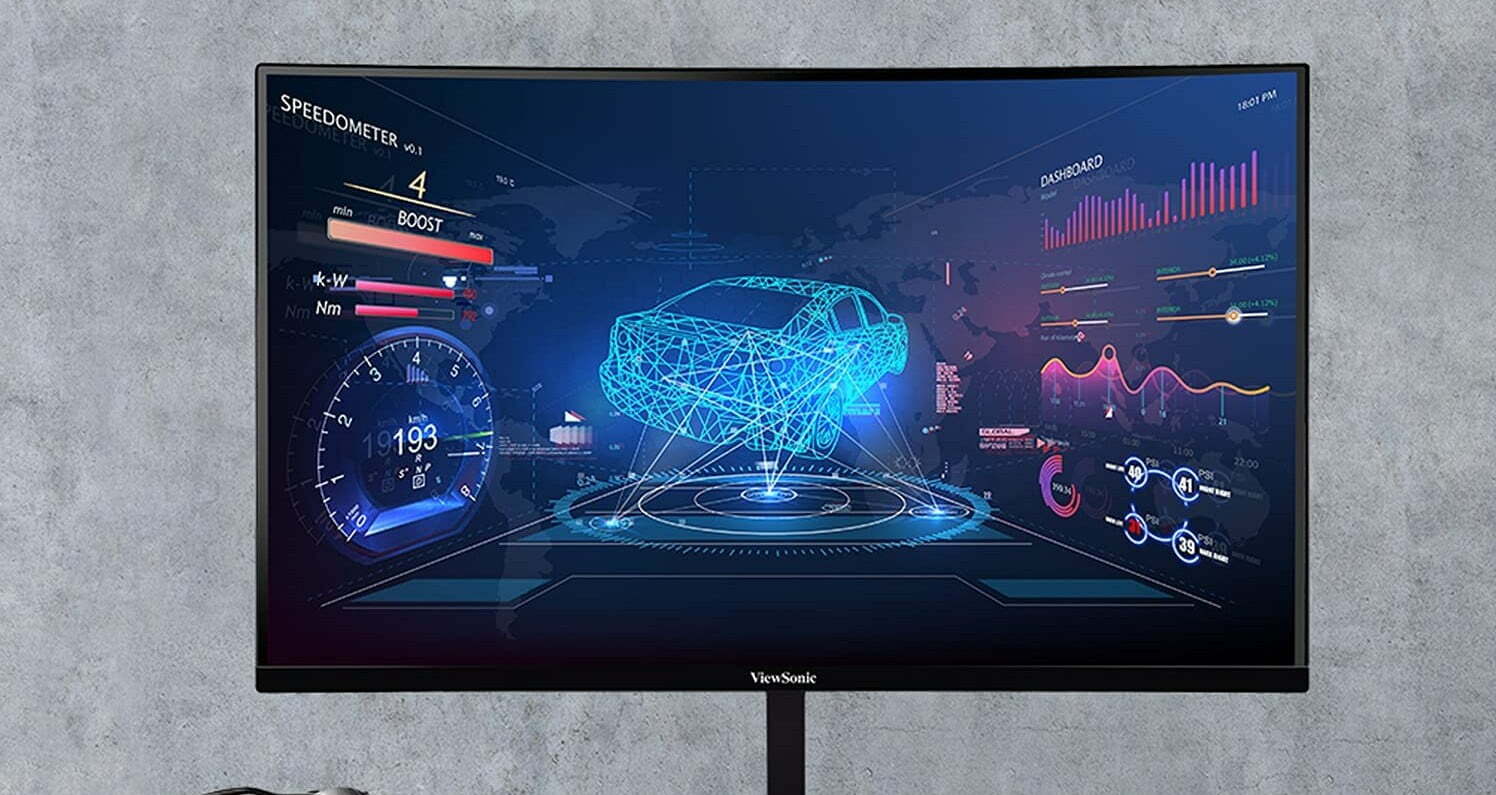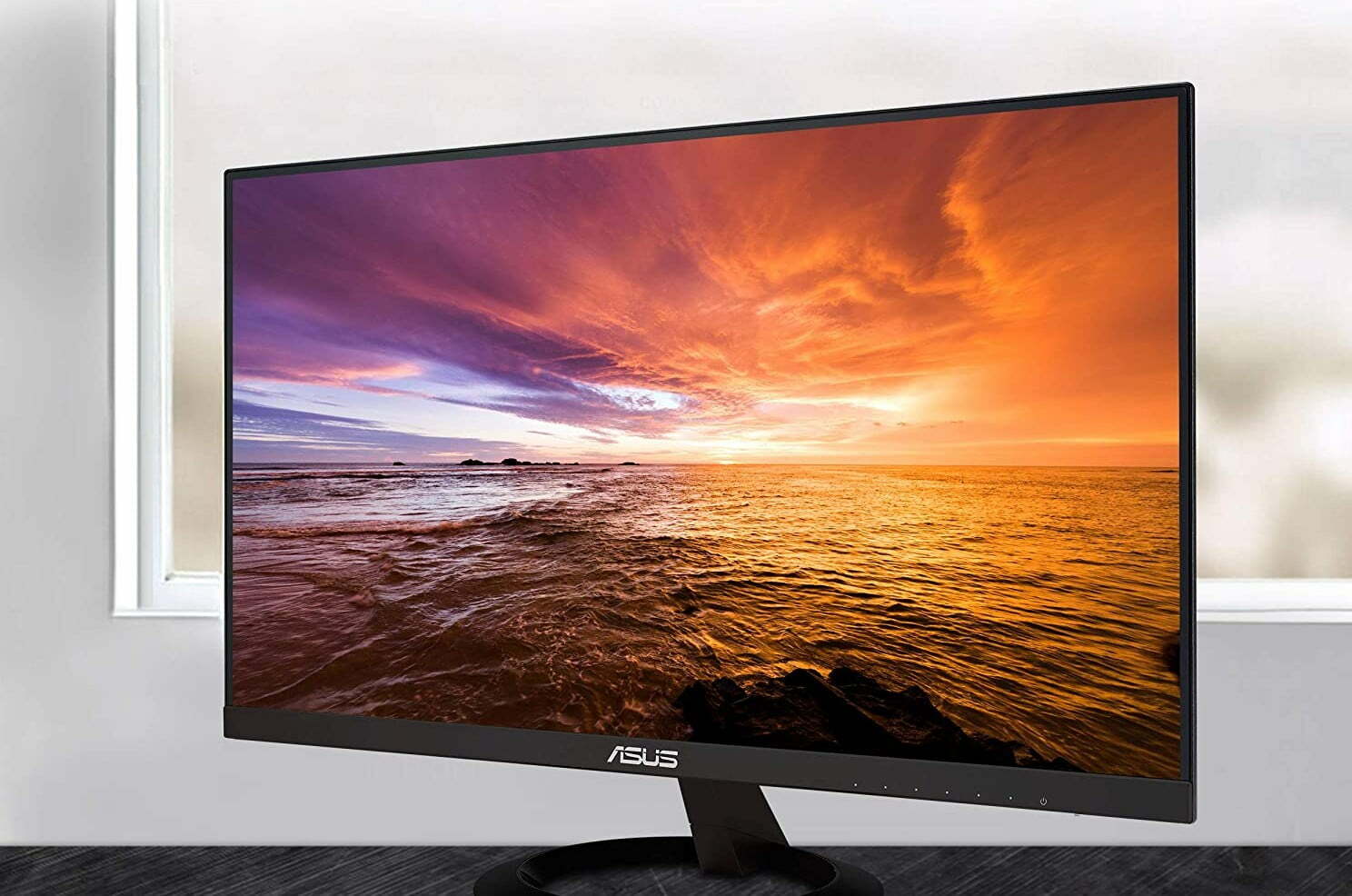If you are shopping for a new screen, you may be comparing computer monitors with DisplayPort vs HDMI ports. The best computer monitors, after all, tend to include one of these two display connection types. Keep reading to learn more about the differences between HDMI and DisplayPort technology. And, if you really want to dig deeper, then visit our resource article covering the differences between VGA vs HDMI for computer monitors.
KEY TAKEAWAYS:
- HDMI is the better option for consumer-grade devices, such as HDTVs and gaming consoles, as the standard specializes in delivering both audio and video signals in a single cable. It will also work for the best WiFi picture frames.
- DisplayPort is a connector that only recently became available to transport audio and may require driver downloads to add audio to a video signal.
- DisplayPort integrates with both G-Sync and FreeSync, and HDMI may offer support for only FreeSync.
Differences Between DisplayPort and HDMI
These are two different display standards, with differing histories, use case scenarios, and more. In other words, DisplayPort and HDMI offer different visions for the transmission of digital data to a computer monitor, though these differences are shrinking with each new update to each digital standard. The differences between the two used to be stark, now they are subtle, such as when comparing 24 vs 27-inch computer monitors.
Here are more differences between DisplayPort and HDMI connections.
Insider Tip
Be sure to check integration with your monitor and PC to see what types of ports and connections are available.
Audio Signals
Both options deliver audio signals, but HDMI has simply had more time as an advantage to perfect the process. Audio transmission didn’t arrive until DisplayPort 1.4, which is a recent iteration of the digital signal standard. Additionally, those looking to stream audio content via a DisplayPort cable may have to download all manner of drivers and related software to ensure compatiblity and to get it to work. HDMI, on the other hand, was always built with both audio and video in mind, offering something akin to a plug-and-play experience. There is a reason, after all, HDMI connections are so popular with consumer-grade devices, such as HDTVs.
Gaming Support
DisplayPort cables offer support for popular GPU syncing technologies, including both AMD FreeSync and Nvidia G-Sync. The same cannot always be said for HDMI cables, though some newer iterations, including HDMI 2.0, offer this kind of support with regard to AMD FreeSync. Integration with popular syncing technology helps gamers reduce screen tears, blur, and other visual artifacts while playing video games on a gaming console. It could also help ease eye strain with prolonged use, if you are comparing LCD vs LED monitors for eyes.
Resolution
The two are in an arms race to deliver the highest resolutions with the highest refresh rates and it is essentially a draw. HDMI 2.1 offers 10K support with refresh rates up to 120Hz. The recently released HDR DisplayPort 2.0 offers 16K support with refresh rates up to 60Hz and 10K with refresh rates up to 80Hz.
F.A.Q.S
What’s the difference: VGA vs DVI vs HDMI vs DisplayPort?
There are many differences between HDMI 2.1, HDMI 2.0, DisplayPort, and related digital standards. It must be noted, however, that only HDMI and DisplayPort offer support for maximum bandwidth and maximum resolution. Additionally, HDMI was built with audio return channel capabilities in mind. We have a whole assortment of pages highlighting the differences between specific pairs of connectors like HDMI vs DVI.
DisplayPort Vs. HDMI: Which is better for gaming?
Back in the days of HDMI 1.4, DisplayPort was the obvious winner, thanks to a better video resolution and superior display stream compression. Things have changed with recent updates, however.
DisplayPort vs HDMI for visual designers?
This depends on what kind of visuals you are designing and your PC setup. If you are designing high-definition digital video, DisplayPort may be the right bet, though be sure to avoid previous versions.
STAT: You’ll most likely find an HDMI port on the back of your television, so a 2.0 or 2.1 is essential for optimal 4K viewing. (source)



































![Best 27 Inch Computer Monitor in [year] 27 Best 27 Inch Computer Monitor in 2026](https://www.gadgetreview.dev/wp-content/uploads/how-to-buy-the-best-computer-monitor.jpg)
![Best BenQ Monitors in [year] 28 Best BenQ Monitors in 2026](https://www.gadgetreview.dev/wp-content/uploads/best-benq-monitor-image.jpg)
![Best ASUS Monitors in [year] 29 Best ASUS Monitors in 2026](https://www.gadgetreview.dev/wp-content/uploads/best-asus-monitor-image.jpg)
![Best Dell Monitors in [year] 30 Best Dell Monitors in 2026](https://www.gadgetreview.dev/wp-content/uploads/best-dell-monitor-image.jpg)
![Best HP Monitors in [year] 31 Best HP Monitors in 2026](https://www.gadgetreview.dev/wp-content/uploads/best-hp-monitor-image.jpg)
![Best Lenovo Monitors in [year] 32 Best Lenovo Monitors in 2026](https://www.gadgetreview.dev/wp-content/uploads/best-lenovo-monitor-image.jpg)
![Best ViewSonic Monitors in [year] 33 Best ViewSonic Monitors in 2026](https://www.gadgetreview.dev/wp-content/uploads/best-viewsonic-monitor-image.jpg)
![Best Gigabyte Monitors in [year] 34 Best Gigabyte Monitors in 2026](https://www.gadgetreview.dev/wp-content/uploads/best-gigabyte-monitor-image.jpg)
![Best Monitors for PS4 Pro Gaming in [year] 35 Best Monitors for PS4 Pro Gaming in 2026](https://www.gadgetreview.dev/wp-content/uploads/best-monitors-for-ps4-pro-image.jpg)
![Best Monitor for Xbox Series X in [year] 36 Best Monitor for Xbox Series X in 2026](https://www.gadgetreview.dev/wp-content/uploads/best-monitor-for-xbox-series-x-image.jpg)
![Best Acer Monitors in [year] 37 Best Acer Monitors in 2026](https://www.gadgetreview.dev/wp-content/uploads/best-acer-monitor-image.jpg)
![Best MSI Monitors in [year] 38 Best MSI Monitors in 2026](https://www.gadgetreview.dev/wp-content/uploads/best-msi-monitor-image.jpg)
![Best SAMSUNG Monitors in [year] 39 Best SAMSUNG Monitors in 2026](https://www.gadgetreview.dev/wp-content/uploads/best-samsung-monitor-image.jpg)
![Best LG Monitors in [year] 40 Best LG Monitors in 2026](https://www.gadgetreview.dev/wp-content/uploads/best-lg-monitor-image.jpg)
![Best AOC Monitors in [year] 41 Best AOC Monitors in 2026](https://www.gadgetreview.dev/wp-content/uploads/best-aoc-monitor-image.jpg)
![Best Philips Monitors in [year] 42 Best Philips Monitors in 2026](https://www.gadgetreview.dev/wp-content/uploads/best-philips-monitors-image.jpg)
![Best Monitors For PUBG in [year] 43 Best Monitors For PUBG in 2026](https://www.gadgetreview.dev/wp-content/uploads/best-monitor-for-pubg-image.jpg)
![Best Stream Decks in [year] 44 Best Stream Decks in 2026](https://www.gadgetreview.dev/wp-content/uploads/best-stream-deck-image.jpg)
![Best Monitors for Streaming in [year] 45 Best Monitors for Streaming in 2026](https://www.gadgetreview.dev/wp-content/uploads/best-monitor-for-streaming-image.jpg)
![Best Monitors For Flight Simulator in [year] 46 Best Monitors For Flight Simulator in 2026](https://www.gadgetreview.dev/wp-content/uploads/best-monitor-for-flight-simulator-image.jpg)




















